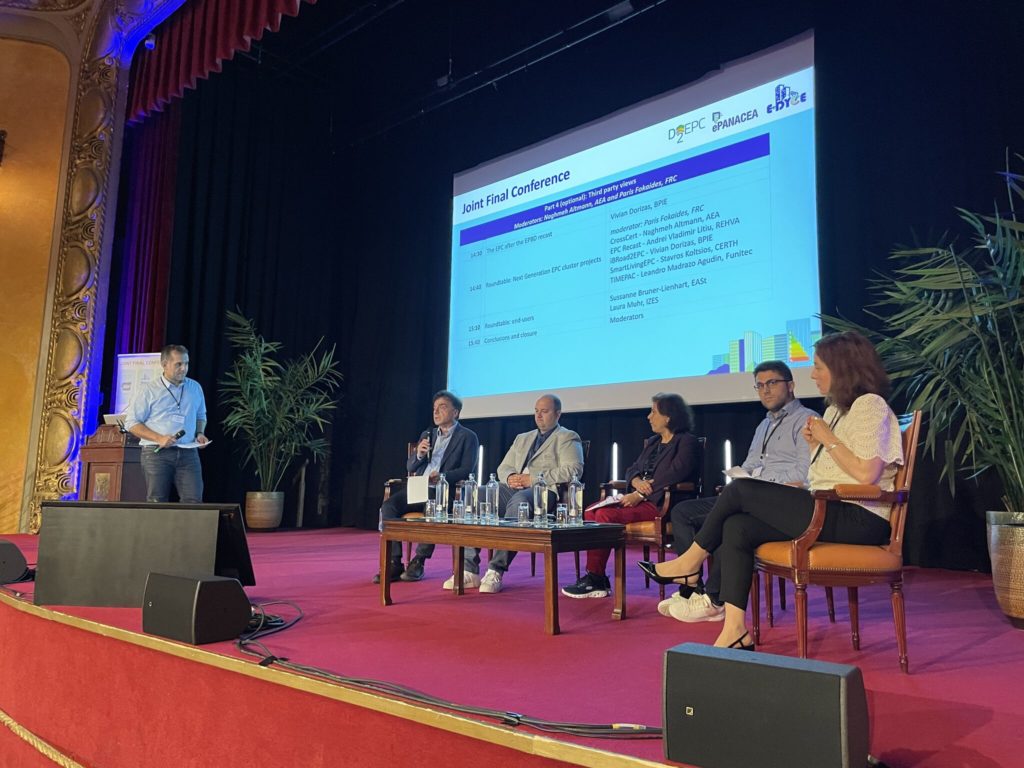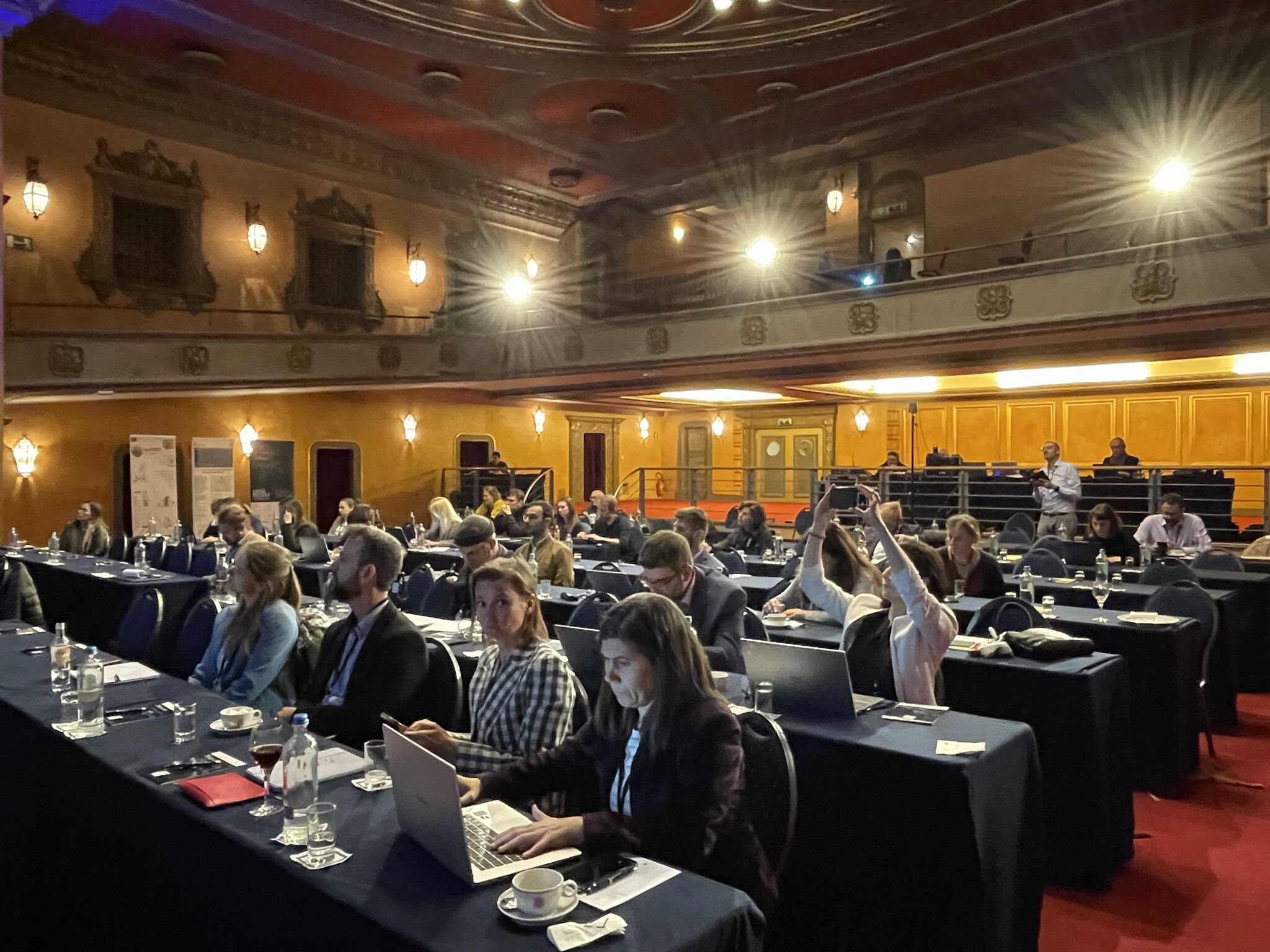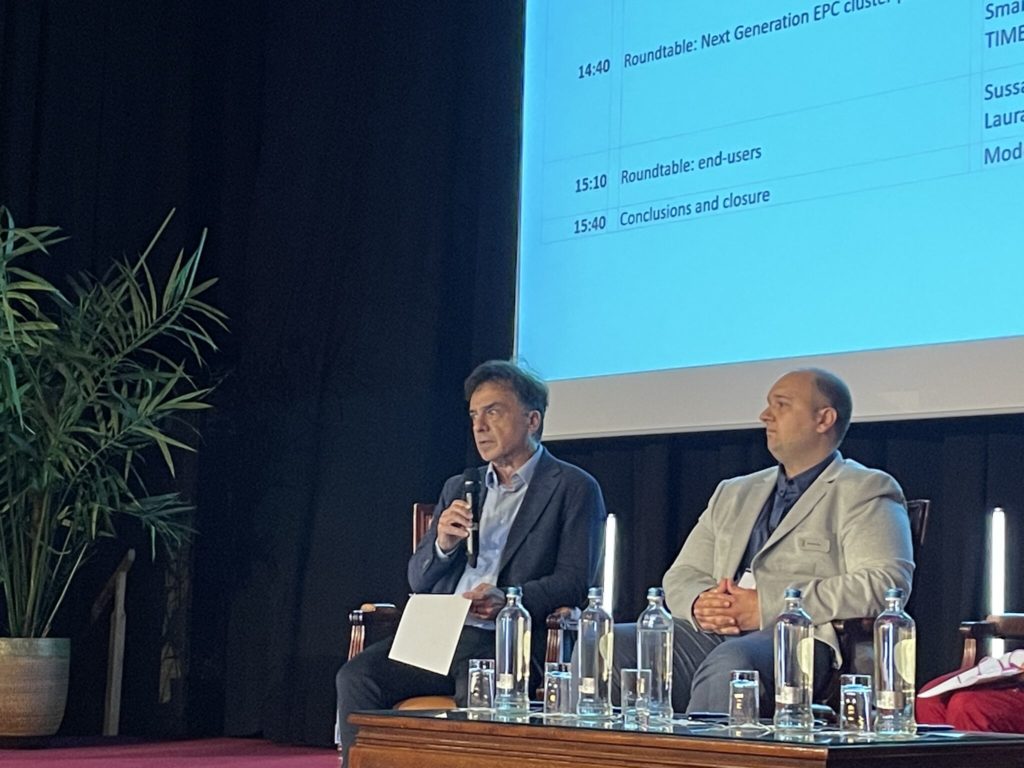Next Generation Energy Performance Assessment, Rating and Certification: Towards a Smart and Decarbonised Future for European Buildings
24 May 2023, Brussels 9:00 – 16:30 CEST
On the 24th of May, TIMEPAC project representatives alongside several stakeholders from all over Europe gathered in Brussels for the final joint event of D2EPC, E-Dyce and H2020 ePANACEA projects.
These projects, like TIMEPAC, form part of the Next Generation Energy Performance Certificates cluster funded by Horizon 2020 and Horizon Europe research and innovation programmes of the European Commission.
The cluster empowers decision makers at both EU and Member State levels and the overall Energy Performance of Buildings Directive related stakeholder community to swiftly leverage the emerging results of this family of projects for the continuous EPBD transposition, implementation and monitoring process and the way the package of policy instruments are meaningfully weaved together.
Energy Performance Certificates (EPCs) are becoming the centre piece of the EPBD being linked to all the other policy instruments (e.g. SRI, Digital Building Logbooks, Renovation Roadmaps & Passports, Level(s)…) and soon to be used as reference for financing building performance activities.
During the afternoon round table discussions TIMEPAC project coordinator Leandro Madrazo was asked about the recent Energy Performance of Buildings Directive (EPBD) recast and how realistic its implementation can be:
“With the new EPBD we are changing the meaning of EPCs. There is a paradigm shift happening, now we are not only talking about #energyefficiency in buildings, but also many other sustainability indicators that take into account also the building environment and the comfort of people. We have to be careful that the “wish list” set out in the EPDB recast can be met at a practical level as several technical issues related to this broader scope still need to be solved.”
That said, each coordinator of the hosting projects pointed out their project highlights. It was observed that there are many things that the three projects have in common, such as identified gaps, however, each project is developing its own tool and methodology on how to overcome the recognised issues. The next steps are still unknown, but what is clear is that we will all continue to work in this field to improve the current assessment and thus contribute to the improvement of Europe’s building stock.



